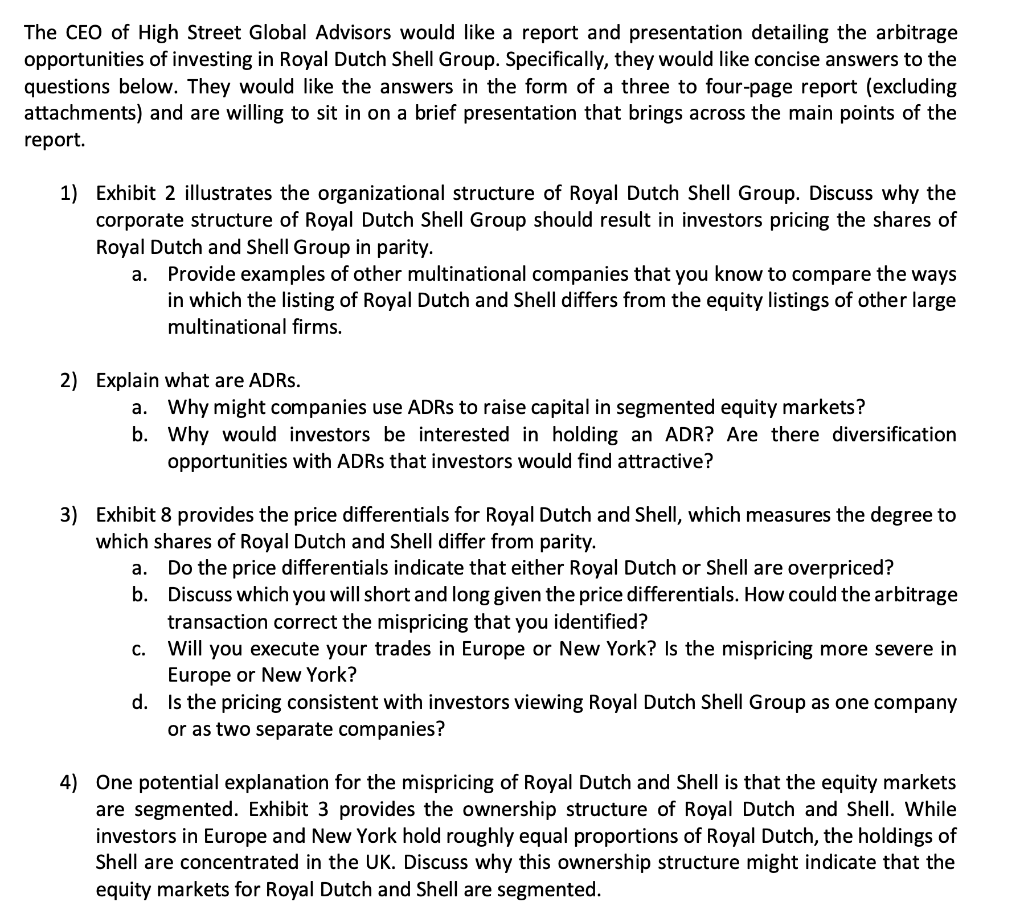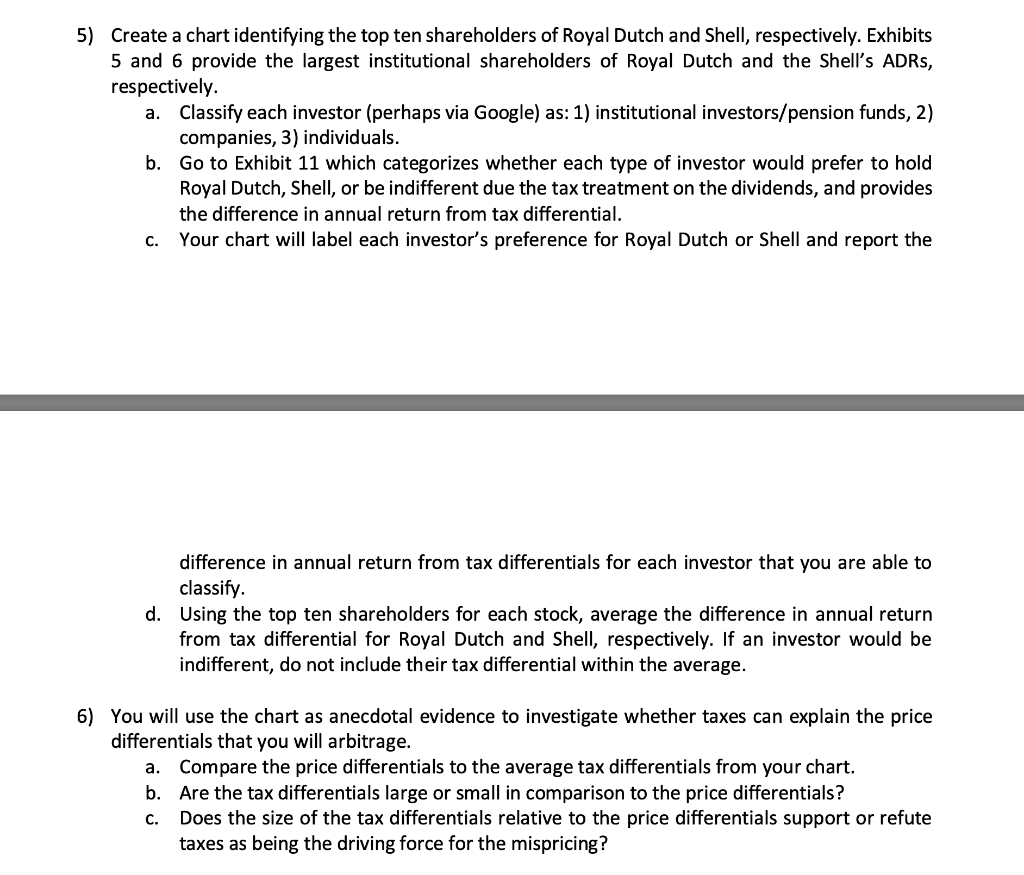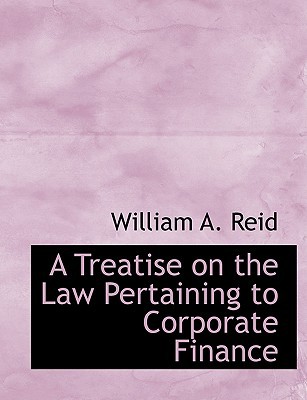
 Answer all questions cohesively with useful graphs or tables if needed
Answer all questions cohesively with useful graphs or tables if needed
The CEO of High Street Global Advisors would like a report and presentation detailing the arbitrage opportunities of investing in Royal Dutch Shell Group. Specifically, they would like concise answers to the questions below. They would like the answers in the form of a three to four-page report (excluding attachments) and are willing to sit in on a brief presentation that brings across the main points of the report. 1) Exhibit 2 illustrates the organizational structure of Royal Dutch Shell Group. Discuss why the corporate structure of Royal Dutch Shell Group should result in investors pricing the shares of Royal Dutch and Shell Group in parity. a. Provide examples of other multinational companies that you know to compare the ways in which the listing of Royal Dutch and Shell differs from the equity listings of other large multinational firms. 2) Explain what are ADRs. a. Why might companies use ADRs to raise capital in segmented equity markets? b. Why would investors be interested in holding an ADR? Are there diversification opportunities with ADRs that investors would find attractive? a. 3) Exhibit 8 provides the price differentials for Royal Dutch and Shell, which measures the degree to which shares of Royal Dutch and Shell differ from parity. Do the price differentials indicate that either Royal Dutch or Shell are overpriced? b. Discuss which you will short and long given the price differentials. How could the arbitrage transaction correct the mispricing that you identified? Will you execute your trades in Europe or New York? Is the mispricing more severe in Europe or New York? d. Is the pricing consistent with investors viewing Royal Dutch Shell Group as one company or as two separate companies? C. 4) One potential explanation for the mispricing of Royal Dutch and Shell is that the equity markets are segmented. Exhibit 3 provides the ownership structure of Royal Dutch and Shell. While investors in Europe and New York hold roughly equal proportions of Royal Dutch, the holdings of Shell are concentrated in the UK. Discuss why this ownership structure might indicate that the equity markets for Royal Dutch and Shell are segmented. 5) Create a chart identifying the top ten shareholders of Royal Dutch and Shell, respectively. Exhibits 5 and 6 provide the largest institutional shareholders of Royal Dutch and the Shell's ADRs, respectively. a. Classify each investor (perhaps via Google) as: 1) institutional investors/pension funds, 2) companies, 3) individuals. b. Go to Exhibit 11 which categorizes whether each type of investor would prefer to hold Royal Dutch, Shell, or be indifferent due the tax treatment on the dividends, and provides the difference in annual return from tax differential. c. Your chart will label each investor's preference for Royal Dutch or Shell and report the difference in annual return from tax differentials for each investor that you are able to classify. d. Using the top ten shareholders for each stock, average the difference in annual return from tax differential for Royal Dutch and Shell, respectively. If an investor would be indifferent, do not include their tax differential within the average. 6) You will use the chart as anecdotal evidence to investigate whether taxes can explain the price differentials that you will arbitrage. a. Compare the price differentials to the average tax differentials from your chart. b. Are the tax differentials large or small in comparison to the price differentials? C. Does the size of the tax differentials relative to the price differentials support or refute taxes as being the driving force for the mispricing? The CEO of High Street Global Advisors would like a report and presentation detailing the arbitrage opportunities of investing in Royal Dutch Shell Group. Specifically, they would like concise answers to the questions below. They would like the answers in the form of a three to four-page report (excluding attachments) and are willing to sit in on a brief presentation that brings across the main points of the report. 1) Exhibit 2 illustrates the organizational structure of Royal Dutch Shell Group. Discuss why the corporate structure of Royal Dutch Shell Group should result in investors pricing the shares of Royal Dutch and Shell Group in parity. a. Provide examples of other multinational companies that you know to compare the ways in which the listing of Royal Dutch and Shell differs from the equity listings of other large multinational firms. 2) Explain what are ADRs. a. Why might companies use ADRs to raise capital in segmented equity markets? b. Why would investors be interested in holding an ADR? Are there diversification opportunities with ADRs that investors would find attractive? a. 3) Exhibit 8 provides the price differentials for Royal Dutch and Shell, which measures the degree to which shares of Royal Dutch and Shell differ from parity. Do the price differentials indicate that either Royal Dutch or Shell are overpriced? b. Discuss which you will short and long given the price differentials. How could the arbitrage transaction correct the mispricing that you identified? Will you execute your trades in Europe or New York? Is the mispricing more severe in Europe or New York? d. Is the pricing consistent with investors viewing Royal Dutch Shell Group as one company or as two separate companies? C. 4) One potential explanation for the mispricing of Royal Dutch and Shell is that the equity markets are segmented. Exhibit 3 provides the ownership structure of Royal Dutch and Shell. While investors in Europe and New York hold roughly equal proportions of Royal Dutch, the holdings of Shell are concentrated in the UK. Discuss why this ownership structure might indicate that the equity markets for Royal Dutch and Shell are segmented. 5) Create a chart identifying the top ten shareholders of Royal Dutch and Shell, respectively. Exhibits 5 and 6 provide the largest institutional shareholders of Royal Dutch and the Shell's ADRs, respectively. a. Classify each investor (perhaps via Google) as: 1) institutional investors/pension funds, 2) companies, 3) individuals. b. Go to Exhibit 11 which categorizes whether each type of investor would prefer to hold Royal Dutch, Shell, or be indifferent due the tax treatment on the dividends, and provides the difference in annual return from tax differential. c. Your chart will label each investor's preference for Royal Dutch or Shell and report the difference in annual return from tax differentials for each investor that you are able to classify. d. Using the top ten shareholders for each stock, average the difference in annual return from tax differential for Royal Dutch and Shell, respectively. If an investor would be indifferent, do not include their tax differential within the average. 6) You will use the chart as anecdotal evidence to investigate whether taxes can explain the price differentials that you will arbitrage. a. Compare the price differentials to the average tax differentials from your chart. b. Are the tax differentials large or small in comparison to the price differentials? C. Does the size of the tax differentials relative to the price differentials support or refute taxes as being the driving force for the mispricing

 Answer all questions cohesively with useful graphs or tables if needed
Answer all questions cohesively with useful graphs or tables if needed





